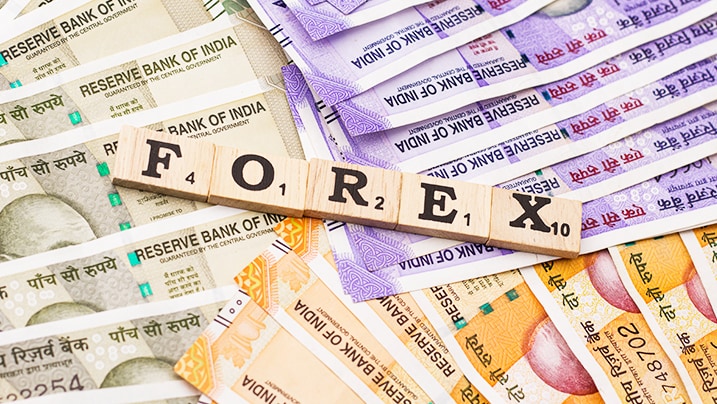Introduction
Forex trading, also known as currency trading or FX trading, involves buying and selling currencies on the global foreign exchange market. It is the largest financial market in the world, with a daily trading volume of over $5 trillion. The Indian forex market is also growing rapidly, thanks to the country’s increasing economic liberalization and integration with the global financial system. In this article, we will discuss how forex trading is done in India.

Image: blog.dhan.co
Basic Concepts
Before venturing into forex trading, it is important to understand the basic concepts involved.
- Currency Pairs: Currencies are always traded in pairs, such as EUR/USD (Euro versus US Dollar). The first currency in the pair is called the “base currency”, while the second currency is called the “counter currency”.
- Forex Brokers: Individuals and organizations that facilitate forex trading by matching buyers and sellers on the forex market are known as forex brokers. Forex brokers provide trading platforms and various other services to traders.
- Spreads: The difference between the buying and selling prices of a currency pair is called the spread. Spreads are typically expressed in pips, which are the smallest increment of price movement.
- Leverage: Leverage allows traders to trade with capital that they do not have. For example, a trader with a leverage of 10:1 can trade with up to $10,000 for every $1,000 they have in their account. Leverage can increase potential profits but also amplifies losses.
Getting Started
To start forex trading in India, you need to follow these steps:
- Choose a Forex Broker: Choose a reputable forex broker that is regulated and offers reliable trading services.
- Open a Trading Account: A forex account is needed to fund your trading activities. Brokers may have different account types with varying minimum deposit requirements.
- Fund Your Account: You can fund your trading account through various methods, such as bank transfer, debit card, and e-wallet.
- Install Trading Software: A trading platform allows you to manage your trades and analyze the market. Brokers usually provide their clients with access to trading platforms.
- Start Trading: Once your account is funded, you can start trading currency pairs. Remember to manage your risk by using stop-loss orders and other risk management techniques.
Advantages of Forex Trading in India
Forex trading offers several advantages to Indian investors, including:
- High Liquidity: The forex market is highly liquid, which means that traders can easily enter and exit positions at competitive prices.
- 24-Hour Trading: Forex trading takes place around the clock, giving traders the flexibility to trade at their convenience.
- Leverage: Leverage allows traders to magnify their potential profits, but it also comes with increased risk.
- Tax Benefits: Forex trading profits are not subject to capital gains tax in India, which makes it an attractive investment option for many Indian investors.

Image: www.yatratourism.in
How Is Forex Trading Done In India
Conclusion
Forex trading in India has emerged as a popular investment option due to its high liquidity, 24-hour trading, leverage, and tax benefits. Understanding the basic concepts and following the steps outlined in this article can help Indian investors navigate the forex market. It is important to approach forex trading with caution, manage risk effectively, and stay updated on market developments to increase the chances of success.






